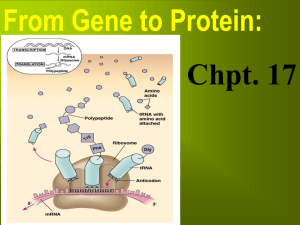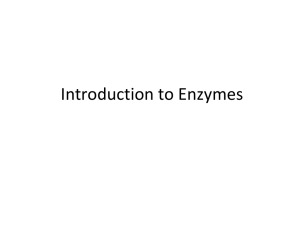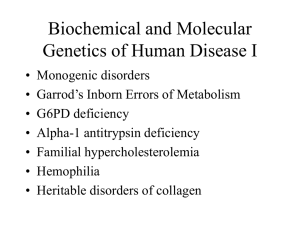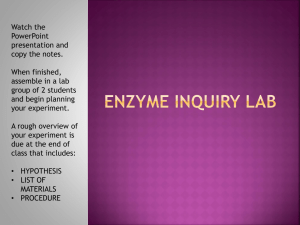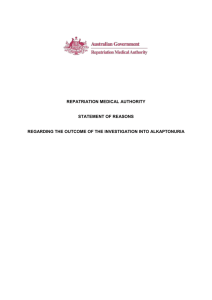The DNA Structure
advertisement
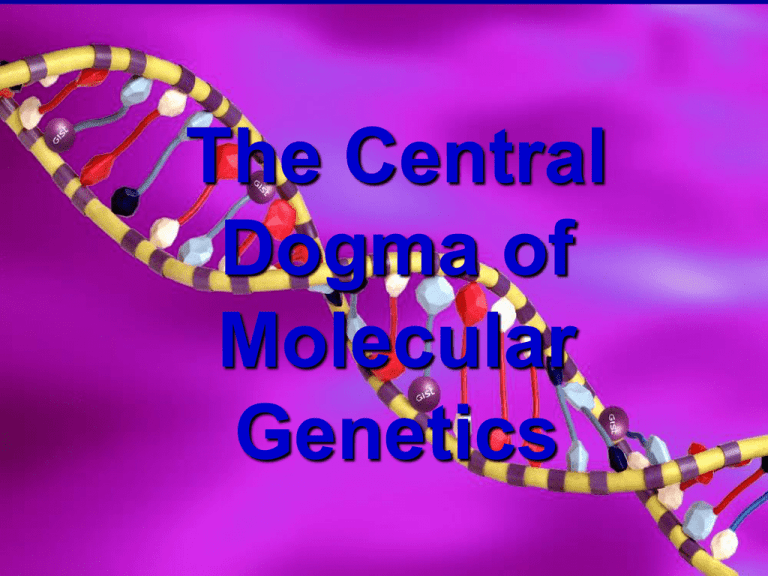
The Central Dogma of Molecular Genetics Inborn Errors of Metabolism • Archibald Garrod (British, 18571936) • The relationship between genes and proteins was first proposed by Garrod in 1908 • Garrod, a prominent physician at St. Bartholomew's Hospital in London, understood both the new science of biochemistry and the emerging discipline of genetics Garrod • He studied a harmless but rare disorder in the general population but frequent in children of first-cousin marriages: alkaptonuria • A patient with this disorder produces urine that when exposed to air turns distinctively dark, because these people lack the enzyme found in normal individuals who are able to convert the reddening agent, alkapton, to another substance • Following Mendel’s laws, Garrod concluded that alkaptonuria is a congenital disorder, not the result of a bacterial infection as was commonly thought Garrod cont. • He observed that inherited diseases reflect a patient's inability to make a particular enzyme, which he referred to as “inborn errors of metabolism” • He further hypothesized that enzymes are under the control of the hereditary material, and thus an error in the DNA resulted in an error in the enzyme. • Garrod's hypothesis was ahead of its time One gene-One Enzyme Hypothesis • This proposal of the one gene-one Enzyme hypothesis was developed by the Americans George Beadle (1903-1989) and George Wells Tatum (19091975) in 1938 • Beadle and Tatum hypothesized that if there really was a one-to-one relationship between genes and specific enzymes, it should be possible to create genetic mutants that are unable to carry out specific enzymatic reactions • They exposed spores of Neurospora crassa (a bread mold) to X-rays or UV radiation and studied the resulting mutations • The mutant molds had a variety of special nutritional needs. Unlike their normal counterparts, they could not live without the addition of particular vitamins or amino acids to their food • Normal Neurospora requires only one vitamin (biotin), but mutants were created that also required thiamine or choline Arginine Biosynthesis • What is the order of the reactions in arginine biosynthesis. Beadle and Tatum cont. • Genetic analysis showed that each mutant differed from the original, normal type by only one gene • Biochemical studies showed that the mutants seemed to be blocked at certain steps in the normal metabolic pathways • Their cells contained large accumulations of the substance synthesized just prior to the blockage point, just as Garrod's patients had accumulated alkapton Beadle and Tatum cont. • As Beadle and Tatum had predicted, they created single gene mutations that incapacitated specific enzymes, so that the molds with these mutations required an external supply of the substance that the enzyme normally produced, and the substance that the enzyme normally used, piled up in the cell • These results confirmed their one geneone enzyme hypothesis • They received the 1958 Nobel Prize in Physiology and Medicine Vernon Ingram • In 1956, Ingram a protein chemist developed a technique called fingerprinting, which maps on paper the various amino acids in a protein sample. • By comparing the fingerprints of sickle cell and normal hemoglobin, Ingram found that one spot differed between the two fingerprints. Ingram cont. • He concluded that normal and sickle cell hemoglobin have a small difference in their amino acid sequences. • From this conclusion we now know that each gene on the DNA will code for one polypeptide or protein. ...... Central Dogma One Gene – One Polypeptide The Big Picture


